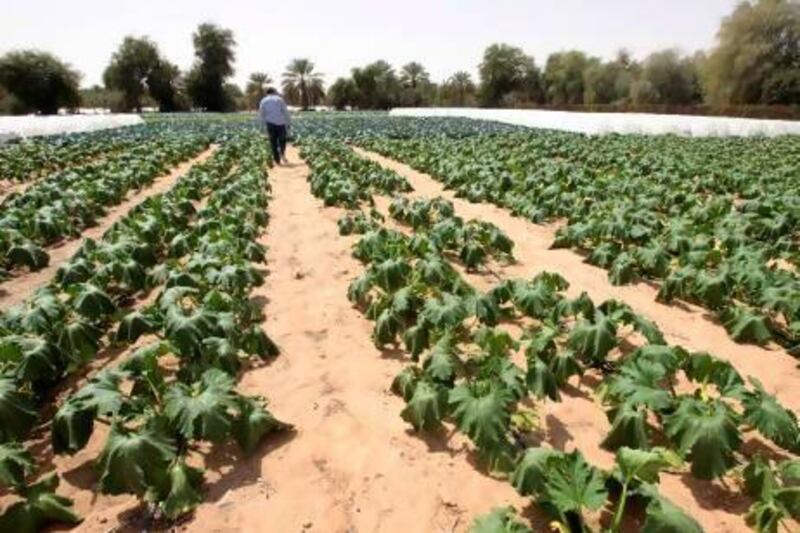DUBAI // Farmers across the Arabian Gulf will soon get hourly weather reports that will help them save water and grow more food.
The Irrigation Management Information System was launched by the International Centre for Agricultural Research in the Dry Areas (Icarda) in Dubai in collaboration with the Ministry of Environment and Water in February.
Not only will it help farmers plant the best crops for their weather conditions, it will give them hourly updates on exactly how much water they should be using to irrigate their produce.
The aim is to avoid wasting the region’s most scarce natural resource.
The system comprises nine weather stations across the Arabian Gulf, including two in the UAE, in Fujairah and Sharjah. They collect data on temperature, humidity and solar radiation.
From that, scientists can calculate the water requirements for each crop grown in Saudi Arabia, Oman, Kuwait, Bahrain, Qatar, Yemen and the Emirates.
“We want to create a website and I’ve started collecting data daily and hourly to put in that website,” said Dr Naem Mazahrih, an irrigation and water management specialist at Icarda. “In the future, farmers can go on the website, select the crop and know how much to irrigate according to the plant growth.
“The website will include all possible crops like tomatoes, cucumbers and anything in open fields such as date palm trees.”
The UAE stations were built about 10 years ago but until now the data they collected was used only for research purposes.
It will now be put to more immediate, practical use, allowing researchers to estimate the evaporation for each crop and so how much water they need – and giving farmers up-to-the-hour access to that information.
“We want to make it wider and link all nine climate stations, to have a regional database,” added Dr Mazahrih.
“We want to put up-to-date data according to climatic conditions starting this year.”
The system will also tell farmers how much to cool their crops.
“It will tell him what temperature it should be at and for how long,” Dr Mazahrih said.
“For instance, you can’t plant peaches here because the chilling requirements are less than 8°C for 200 hours.”
Similar systems are in place elsewhere, such as Jordan, but this is the first time one has been applied in the Arabian Gulf. The aim is to save as much water, money and fertiliser as possible while producing more food.
“This is all to save water and use it efficiently,” said Dr Mazahrih.
“Because more water means more fertiliser to be used and it will be lost in the soil, so that will create pollution. More water also means more energy to pump it and more labour costs for the farmers.”
But some farmers have yet to be convinced of the value of the weather information.
“I don’t think it’s vital to have this system because most farmers use their common sense or their sixth sense,” said Naoufal Mohammad, who grows up to 30 crops, including leafy vegetables and cauliflowers, on his 800,000 square metre farm in Al Ain.
“It’s good if you’re new in the country and you don’t know the environment but if you’ve been farming for more than three years, you have an automatic built-in [memory] in your system.”
Mr Mohammad said the project could benefit people from Europe who were not familiar with the UAE's climate. "We've been here for a long time so we know the weather every month and we know what to expect," he added.






